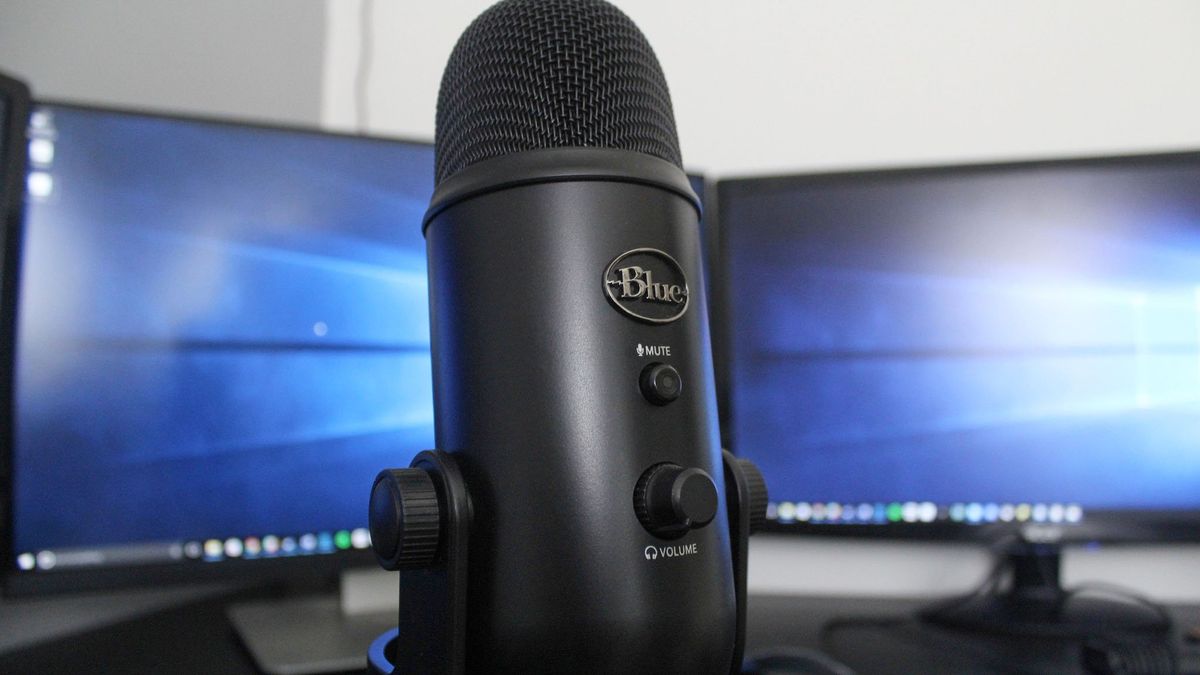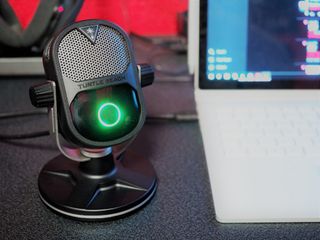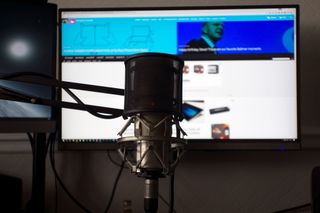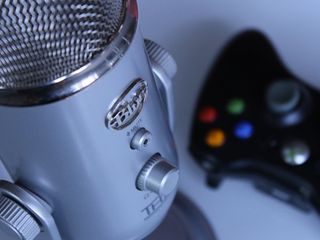How to pick the right microphone for your PC
There are many microphones out there that work with PCs, but which one should you go for? Read this.

Like most aspects of buying a PC and its accessories, the No. 1 factor in the decision should be your use case. For example, there's no point buying a broadcast-quality microphone if you only use it for Skype calls.
After that, you have to take into consideration your budget and which type of microphone will best suit your setup: headset, USB or XLR.
Let's break down the facts on each option.
The headset

Simply put, if your use case is mainly conference calls, and you're not recording audio for creative purposes, a headset microphone should be on your radar. They're often much cheaper than standalone microphones with the added benefit of built-in headphones.
Equally, if you're a gamer who's looking for an easy way to talk to your buddies in game, a headset is a great choice. More expensive gaming headsets even have microphones you wouldn't be ashamed of using in creative situations.
Headsets come in either USB form or regular analog, with a combined 3.5mm jack or split jacks for microphone and headphone audio.
USB microphones

USB microphones are probably the best all-around mics for use with a PC. They're easy to use, with most being a plug and play operation, and you'll usually find a headphone jack on the back for both listening to audio from your computer and monitoring your own voice.
Get the Windows Central Newsletter
All the latest news, reviews, and guides for Windows and Xbox diehards.
USB microphones can be had in a range of sizes, from very small ones that are perfect for travel, like the Samson Go Mic, right up to larger, high quality microphones like the Blue Yeti or Razer Seiren. The quality of the sound recorded will nearly always be better than that of a headset microphone.
A good quality USB microphone will suit all use cases, from simple conference calls and streaming, right up to recording your own vocals for music or a podcast. Like most things, though, to get that kind of quality you have to pay a premium.
XLR microphones

XLR microphones are truly analog, and as such, you can't just attach them to your PC. Some cheaper ones may be able to connect via a XLR-to-USB cable, but the majority of the time you need an interface or a combination of parts.
XLR microphones need the power to drive them, which you can either get from that interface or in some cases you'll need to use a phantom power supply on top of whatever you use to get the audio from the microphone to your PC.
XLR microphones generally offer the best quality audio, but the tradeoff is price because you'll need additional hardware. Broadcast quality microphones will also always be more expensive than those designed for light use.
If you want the absolute best audio quality, you'll want a good XLR microphone and audio interface.
How to connect an XLR microphone to your PC
Streaming

With the rise of streaming on sites such as YouTube, Twitch, and Mixer, microphones are perhaps a bigger consideration now for more people. Any of the three types of microphone mentioned here can deliver good results for your streams, but you get out what you put in.
If you're starting out or on a tight budget, a USB mic or headset is a better bet. If you have a large audience or you're chasing maximum production values, an XLR microphone is probably for you.
And whatever it is you're looking for, we have you covered with some great recommendations.

Richard Devine is a Managing Editor at Windows Central with over a decade of experience. A former Project Manager and long-term tech addict, he joined Mobile Nations in 2011 and has been found on Android Central and iMore as well as Windows Central. Currently, you'll find him steering the site's coverage of all manner of PC hardware and reviews. Find him on Mastodon at mstdn.social/@richdevine